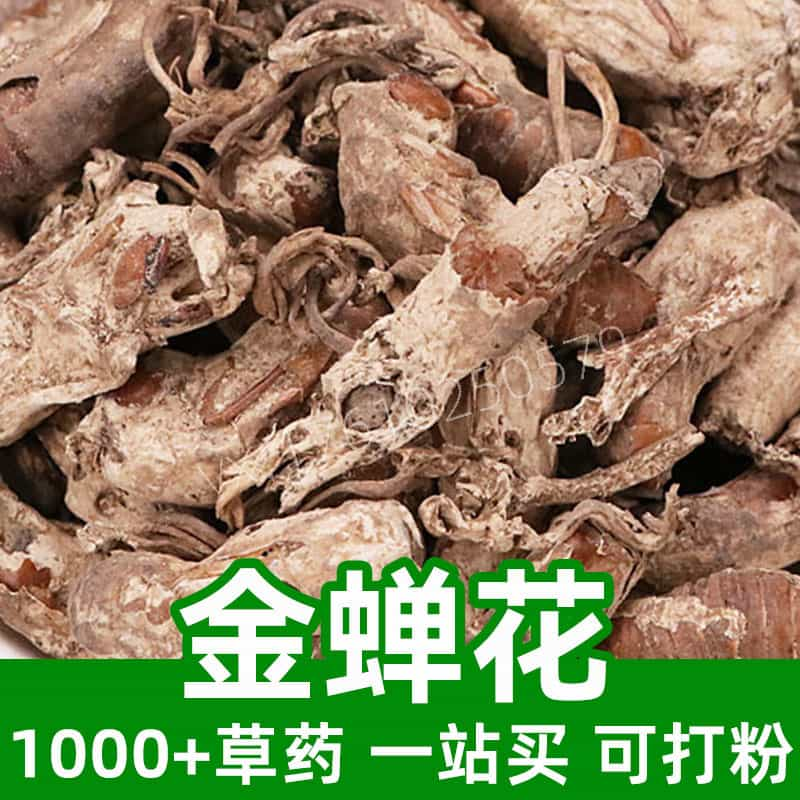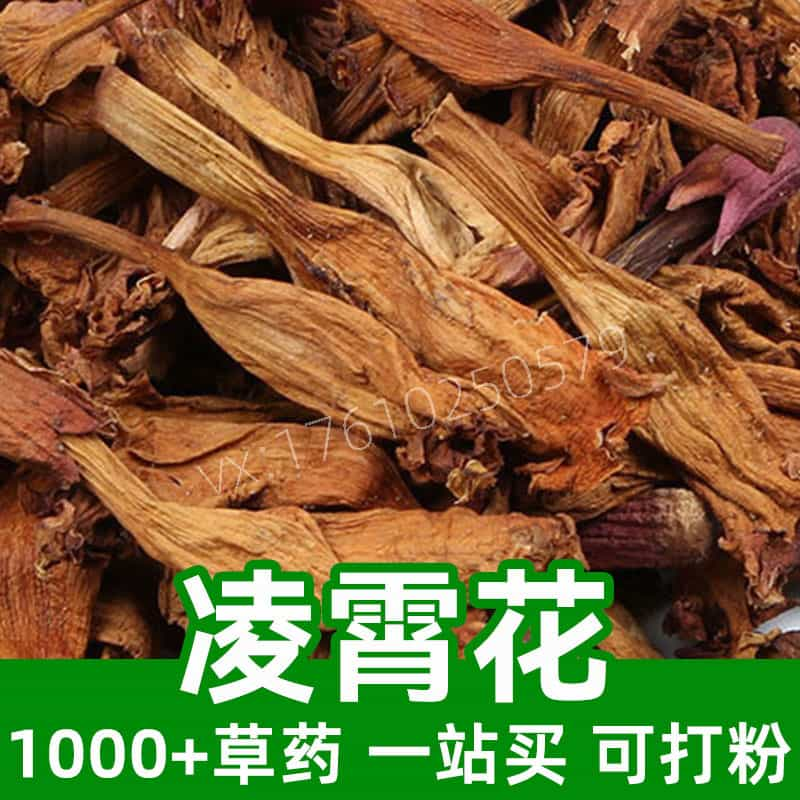Scutellaria baicalensis Product Introduction
Scutellaria baicalensis is a traditional herbal medicine with key compounds like baicalin, baicalein, and wogonin. It is primarily produced in China in regions such as Henan, Shaanxi, Shanxi, and Shandong, with some distribution in other areas. Known for its bitter taste and cooling properties, Scutellaria baicalensis is associated with the liver, gallbladder, and stomach channels in traditional Chinese medicine. It is widely used for clearing heat, reducing inflammation, detoxifying, and drying dampness, and is commonly applied to treat conditions such as fevers, malaria, jaundice, and damp-heat jaundice. Additionally, it is used as a preservative and antioxidant in the food industry.
Main Active Components of Scutellaria baicalensis
Scutellaria baicalensis (Latin: *Scutellaria baicalensis Georgi*) is a traditional medicinal herb containing several active components that play a key role in its therapeutic effects. These components include baicalin, baicalein, wogonin, flavonoids, baicalensis acid, and baicaleinol.
- Baicalin: A primary active component of Scutellaria baicalensis with anti-inflammatory, antioxidant, and antimicrobial properties, commonly used for heat-clearing and detoxifying purposes, as well as cooling the blood and stopping bleeding.
- Baicalein: Another important component with antioxidant, anti-inflammatory, and anti-tumor properties, often used to treat cardiovascular diseases and hepatitis.
- Wogonin: A flavonoid compound with anti-inflammatory, antioxidant, and anti-tumor properties, showing effects in immune function enhancement, blood sugar regulation, and liver protection.
- Baicalensis Acid: A flavonoid acid with antioxidant, anti-inflammatory, and antimicrobial effects, used for immune regulation and anti-tumor purposes.
- Baicaleinol: Another significant component with antioxidant, anti-inflammatory, and anti-tumor effects, beneficial for skin inflammation and immune function regulation.
Among these, baicalin and wogonin are the major therapeutic components, offering broad pharmacological activity and clinical value, primarily through mechanisms such as inflammation modulation, heat-clearing, detoxification, and antioxidation, making them useful for treating various diseases.
Applications, Usage, and Dosage of Scutellaria baicalensis
As a traditional medicinal herb, Scutellaria baicalensis is widely applied in both traditional Chinese medicine and the food industry. Below are its applications and recommended usage and dosage:
- Traditional Chinese Medicine Applications:
- Heat Clearing and Detoxifying: Used to reduce fever and release toxins, commonly applied to treat heat-related illnesses like urinary infections and dysentery.
- Cooling Blood and Stopping Bleeding: Effective for clearing heat from the blood and stopping bleeding, useful for conditions like bloody stools, abnormal uterine bleeding, and nosebleeds.
- Fire-Draining and Pus Expelling: Effective for clearing lung heat, expelling phlegm, and draining pus, suitable for lung congestion, infections, and abscesses.
- Swelling Reduction and Dissolution: Used for reducing swelling and dissolving masses, beneficial for tumors and nodules.
- Usage and Dosage:
- Decoction: Commonly used in decoctions, with 15-30 grams per dose, adjustable based on the condition and medical advice.
- Powder Form: Scutellaria baicalensis can also be powdered and taken orally, 3-9 grams per dose, with dosage adjustments as needed.
- Topical Application: May be applied externally in ointment or solution form for direct application to affected areas.
- Food Industry Applications:
- Health Supplements: Scutellaria baicalensis extract is often included in health supplements for immune support and antioxidant benefits.
- Flavoring Agent: It can also serve as a flavoring agent to enhance taste and improve the sensory profile of foods.
- Recommended Dosage:
- Oral Supplement: Suggested dosage of Scutellaria baicalensis extract ranges from 100 to 500 mg per dose, 1-3 times daily.
- Food Additive: For use as a food additive, follow national regulatory guidelines and production standards.
Overall, Scutellaria baicalensis has significant value in traditional Chinese medicine and food applications. Dosage and usage should be tailored to individual needs and medical guidance to ensure safe and effective use.
Source Plant Introduction, Distribution, and Growth Environment of Scutellaria baicalensis
Scutellaria baicalensis (*Scutellaria baicalensis Georgi*) is a perennial herbaceous plant in the Lamiaceae family, also known as Huangzhi or wild zhizi. It is one of China's native medicinal plants. Below is a detailed description of its characteristics, distribution, and growth environment:
- Botanical Characteristics:
- Scutellaria baicalensis typically grows 30-80 cm tall with thick, branched rhizomes and numerous secretory glands.
- Its leaves are oval to lanceolate with serrated edges and often covered with fine, short hairs.
- It has spike-like inflorescences at the tops or in axils, with blue-purple flowers. The calyx has two lips, the upper forming a shield-like shape and the lower lip divided into three parts.
- Distribution:
- Scutellaria baicalensis is native to China, especially in the northern, central, northeastern, and southwestern regions, including the Yellow, Yangtze, and Liao river basins.
- It is also found in other East Asian regions, such as Korea and Japan.
- Growth Environment:
- Prefers warm, moist, sunny conditions, with broad soil adaptability, thriving in sandy loam, loam, and limestone-rich soils.
- Scutellaria baicalensis is drought-resistant and can also tolerate moist conditions, growing in riverbanks, fields, meadows, and forest edges.
- Typically found at altitudes of 200-1800 meters.
- Growth Habits:
- It has a well-developed root system and strong growth potential, with notable competitive ability.
- Growth period spans from April-May to September-October, flowering in June-August, and fruiting in August-September.
- It requires adequate sunlight and moderate moisture during its growth, with low soil fertility demands, making it relatively easy to cultivate and manage.
In conclusion, Scutellaria baicalensis is a vital medicinal plant in China, widely distributed across several regions with a strong adaptability to diverse environments, representing a significant component of traditional Chinese herbal medicine.
Harvesting, Processing, and Storage of Scutellaria baicalensis
Proper harvesting, processing, and storage of Scutellaria baicalensis are essential to maintaining the quality and efficacy of the herb. Below are relevant details on these aspects:
- Harvesting Time:
- Generally harvested after flowering until before fruit ripening, usually in the late summer or autumn when active compounds are at peak levels.
- Harvesting Method:
- Use sharp tools to uproot both above-ground and rhizome parts, keeping the rhizome intact to prevent damage and contamination.
- Processing:
- Clean harvested Scutellaria baicalensis promptly to remove soil and impurities, then dry in shade or air dry to prevent mold and degradation.
- Once dried, the rhizome should be cut into segments or slices for further processing or use.
- Processing Methods:
- Drying techniques include sun drying, air drying, or steam drying, with sun drying being the most common but requiring protection from direct sunlight and rain.
- During processing, maintain proper temperature and ventilation to avoid overheating or humidity damage.
- Storage:
- Store processed Scutellaria baicalensis in a dry, ventilated, cool place, avoiding direct sunlight and high temperatures.
- Place in sealed containers or bags to prevent moisture absorption and pest
Monica Sun is a seasoned expert in the natural raw materials industry, with over a decade of experience specializing in traditional Chinese medicinal herbs, spices, and fungi. She is skilled in the sourcing, processing, and application of these materials, emphasizing sustainability and innovation. Monica Sun has contributed to the development of high-quality natural raw materials that serve as essential components in functional foods, pharmaceuticals, and cosmetics, delivering tailored solutions to meet diverse market needs.













